The SN95 Generation Ford Mustang GT is a Used Car Hidden Gem
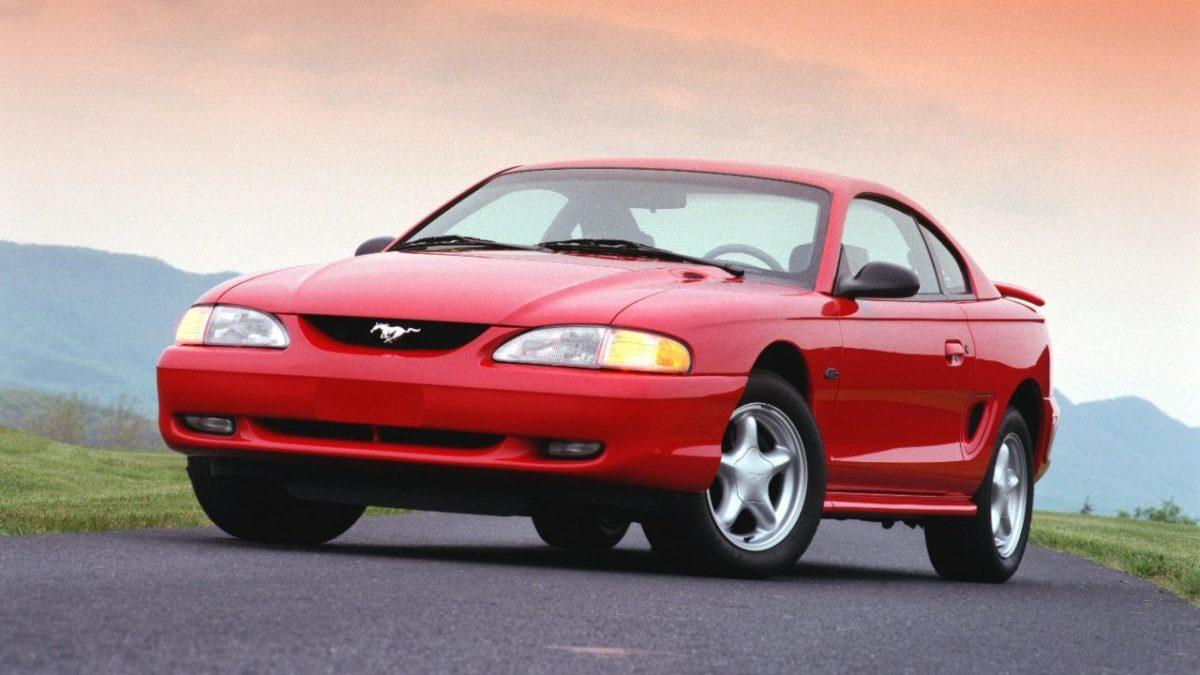
Contents
Introduction
The now iconic 5.0-liter V8 equipped “Fox body” Mustang, whether in plain Jane LX or gussied-up GT form, has seen its stock rise quite a bit in recent years. We like these frisky, squared-off “Box body” ponies as much as the next car buff. But these days it’s getting increasingly tough to find one that hasn’t been ridden hard and put away wet, modified in questionable taste, or priced too optimistically.
On the other hand, the Fox’s successor, the ’94 to ’98 Mustang — known to pony car fans by its “SN95” internal factory moniker — is, in GT form, something of a dark horse that is currently an outstanding value.
These Mustangs may lack the lighter weight and somewhat more visceral charm of the Fox, but they are better in a few key respects. Specifically, they have a more rigid and stable chassis structure, better handling and ride qualities, and arguably more attractive styling inside and out, especially in convertible form.
We’ve focused here on the “early” SN95 cars, produced from 1994 to 1998. That’s because in 1999 Ford introduced a redesigned “New Edge” body that never really appealed due to its clash of rounded and sharp-edged forms and overall bloated look. Also, in keeping with our “bang for the buck” philosophy, we haven’t included the more expensive and more mechanically exotic Mustang Cobra.
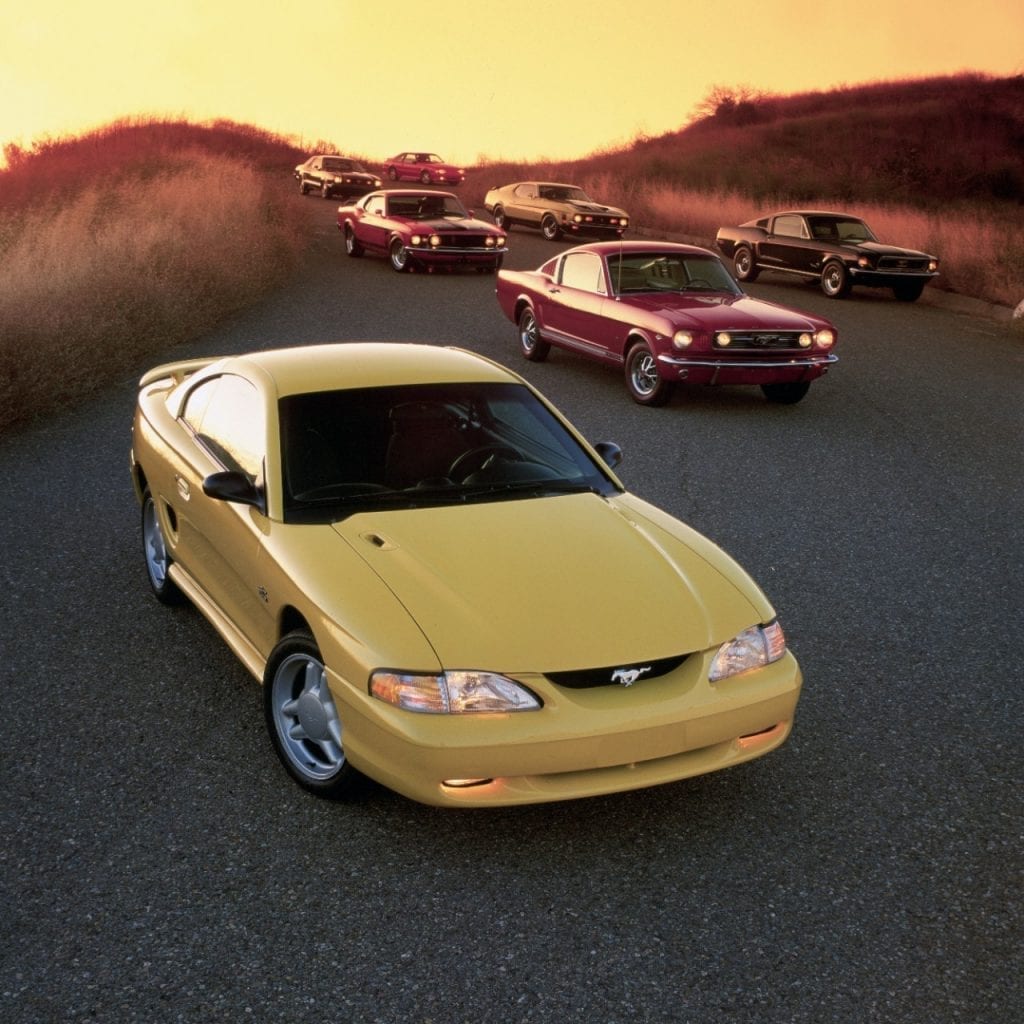
SN95 Overview
1994-1995: Rolling in My 5.0
After 15 model years of production (1979-1993), the Fox body Mustang was finally replaced in 1994 with the SN95. Though it shared much of its platform with its precursor, the newer version has more traditional Mustang styling cues, such as the long sculpted character lines along its flanks, which are punctuated by (fake) air scoops behind the doors. A more steeply raked windshield also gives it a sleeker look. Notably, a hatchback body style was no longer offered, leaving just the coupe and convertible.
Inside, a symmetrical “dual-cowl” dash design recalls the earliest Mustangs, while the center console, with its integral storage bin/armrest, looks nicer than the Fox’s jumbled together, hard plastic affair. In terms of comfort, the seats are no better nor worse than before — and, in old-school muscle car style, continue to lack much lateral support, making a spirited drive on a winding road something of a core workout.
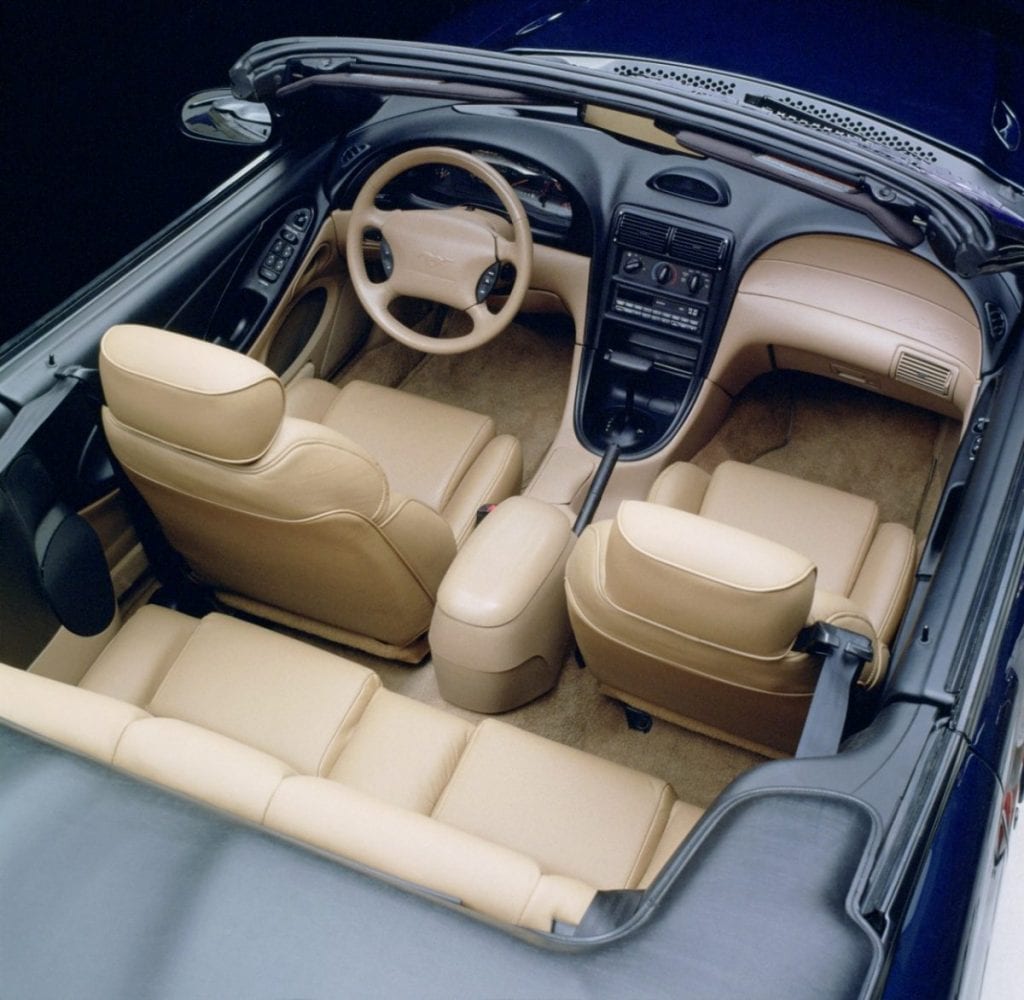
Under the hood sits the same 5.0-liter V8 (actually 4.9 liters, but apparently Ford rounds up) that Vanilla Ice rolled with, now rated at 215 horsepower, slightly less than it produced in the Fox body cars. Road tests of the day had the ’94 Mustang GT hoofing it to 60 mph in the range of 6.4 seconds (the coupe with a five-speed manual) to 7.8 seconds (the heavier convertible with a four-speed automatic), with the quarter mile ranging from the low-to-high-15 second range. Not enough to keep up with its V8-powered F-body rivals, but quick enough to be fun while blasting through the gears up an on-ramp or moving away from a stoplight.
Overall the handling of the SN95 Mustang GT is more than respectable for a car with an old-fashioned, solid rear axle layout. That said, we still wouldn’t advise trying to catch a well-driven Miata on a tight, twisty road.
Other than the introduction of the one-year-only “GTS” trim level — essentially a lower-priced GT that deleted the fog lights, rear spoiler and fancy wheels — things stood pat in Mustang GT land for 1995.
1996-1998: Getting My Kicks with a 4.6
For 1996, the SN95 got Ford’s newer, SOHC 4.6-liter “Modular” V8, rated at the same 215 hp as the outgoing pushrod 5.0 — until 1998, when it got a boost to 225 horses. Although the acceleration times are about the same as the 5.0, the 4.6’s power delivery is different, trading some low-end grunt for a smoother, more eager higher rpm rush. Its rev-happy nature makes the 4.6 an ideal partner with the available five-speed manual gearbox, though a four-speed automatic continued to be available.
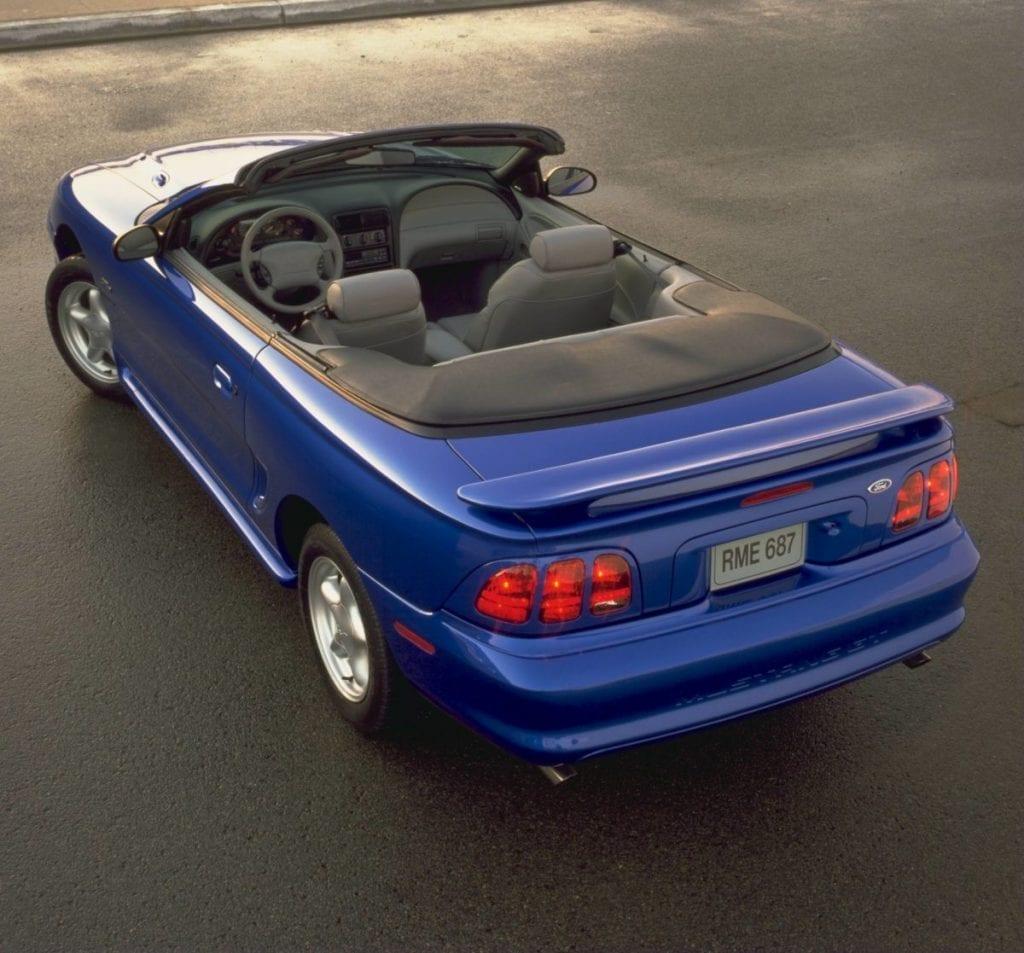
The easiest way to tell a 5.0 car from a 4.6 is the taillight design: the ’94 and ’95 Mustangs have three horizontal lenses, while the ’96-’98 have three vertical lenses, harkening back to the classic look from the earliest Mustangs. No other notable changes occurred for the remainder of the early SN95 run, other than the removal of the clock pod atop the dash for the ’97 and ’98 models (since their audio display now included a clock).
Which One to Buy
Which SN95 you pick is essentially a tale of two engines. Those who prefer the greater low-end muscle of an old-school, pushrod-design engine should lean towards the ’94 and ’95 versions with the 5.0. On the other hand, those who like the upper range pull of an overhead cam engine should gravitate towards the ’96-’98 with the 4.6.
Either way, you get a V8 with a great soundtrack and satisfactory performance, especially when paired with the five-speed manual gearbox (though we can understand somebody going with the automatic if they live where the rush hour grind is especially lengthy).
Problem Areas
Although these are fairly stout cars mechanically, there are still some weak areas to be aware of. Most complaints center around problematic HVAC blower motors; leaks from the coolant expansion tank, power steering pump, and/or rear main seal; or issues with power window motors and power seat motors. Also, for cars with manual gearboxes, the clutch cable and the throw out bearing are noted as possible failure points. Check out the various enthusiast forums (such as SN95Forums) for more of a deep dive on any of these issues.
Keep in mind that these are older cars and many of the potential problems may have already been addressed. As always, documentation showing a solid maintenance history as well as proof of various repairs being made is key. Our “get a pre-purchase inspection” advice (which makes sense for any 5+ year-old car) holds true here as well.
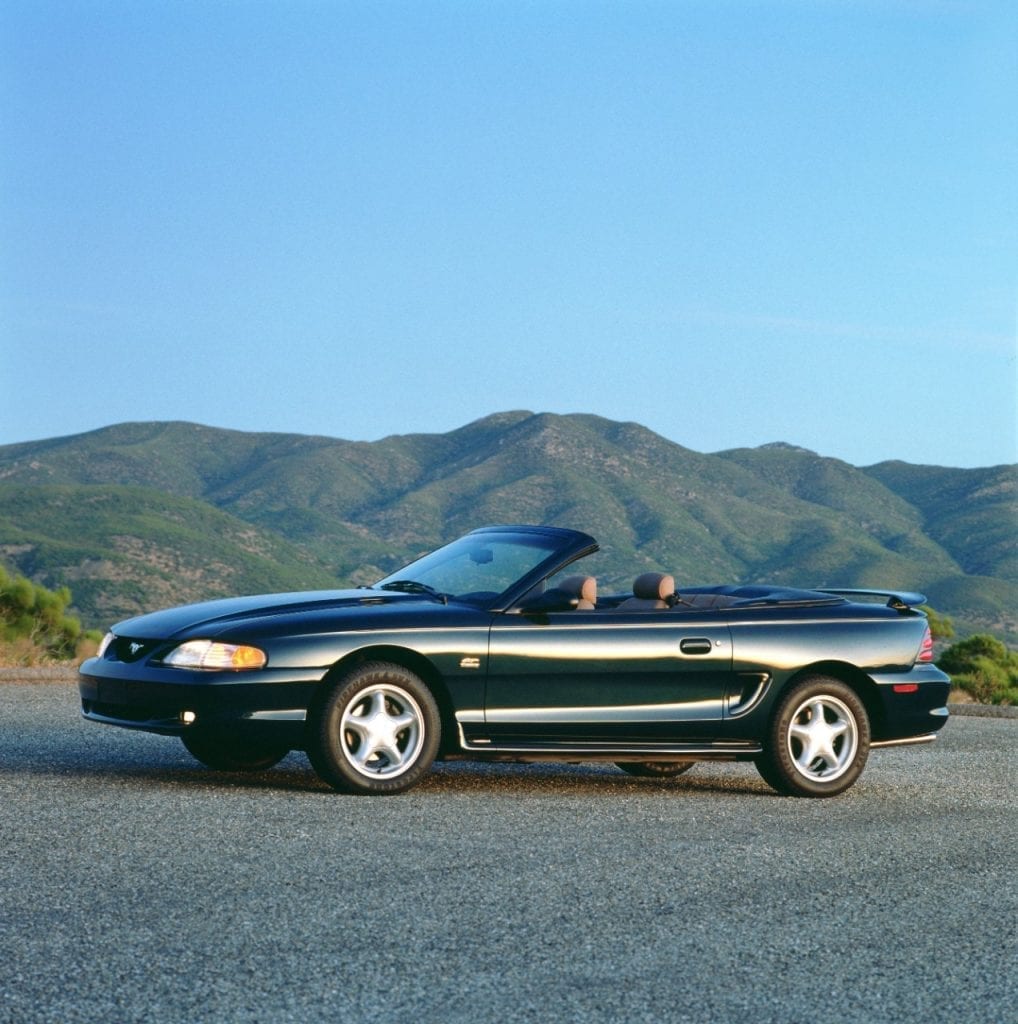
Price Ranges
$8000 – $10,000+ buys you a top notch, well-kept SN95 with very low mileage (less than 35k at the upper end of this price range), solid maintenance records, and a virtually showroom-ready appearance from top to bottom, front to back.
$6000 – $8,000 buys you a nice example inside and out, with mileage typically around 55-70k, a clean history, and no known major issues.
$4000 – $6,000 buys you a solid specimen with mileage typically in the range of 70-100k. On the low end of this price range, there may some issues to sort out (or not), such as faded paint, bumper scuffs, worn seat bolsters, and/or inoperative A/C. However, examples at the upper end should present well and have no needs of that magnitude.
The Bottom Line
The SN95’s main rivals from the era, the F-body Camaro Z28/SS and Firebird Formula/Trans Am, admittedly offer superior performance thanks to their muscle-bound 5.7-liter V8s. However, the Mustang GT makes for a better daily driver, for a few key reasons: 1) easier ingress/egress (vs. the F-bodies with their longer, heavier doors and lower seats), 2) a more comfortable ride, 3) and for most folks a better seating position. Settling behind the wheel of an F-body can feel like sitting down in a long bathtub, while the Mustang provides a more upright position with better outward visibility.
Also worth mentioning is the huge aftermarket for these cars, allowing you to easily quicken its stride, sharpen its handling, or both. We’ve said before that sound accounts for much of the fun factor when driving a performance car. Although these Mustang GTs already sound pretty good with their factory exhaust, installing a less restrictive and more vocal cat-back system can provide more grins without requiring you to put the spurs hard to your ‘Stang.
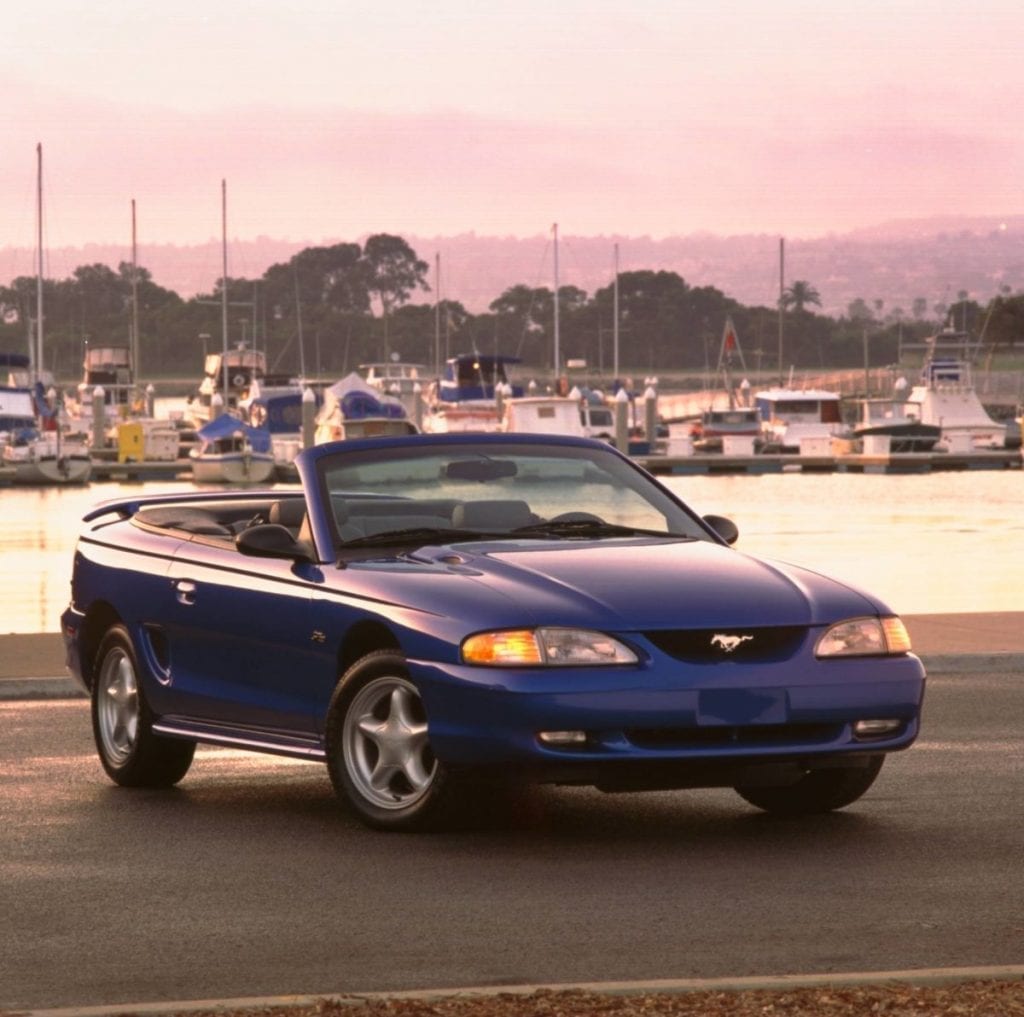
As a used car bargain, the SN95 checks all of the boxes. It’s a fun car that looks great and sounds even better. Plus, it’s relatively easy to maintain, with great aftermarket support and a well-qualified indy mechanic in almost every neighborhood. Most importantly, it’s dirt cheap, with even the nicest examples selling for less than ten grand. Even if you had twice that much to spend, you’d be hard pressed to find anything that could deliver more driving satisfaction than a well-kept ’94-’98 Mustang GT.
Photos courtesy Ford and Creative Commons